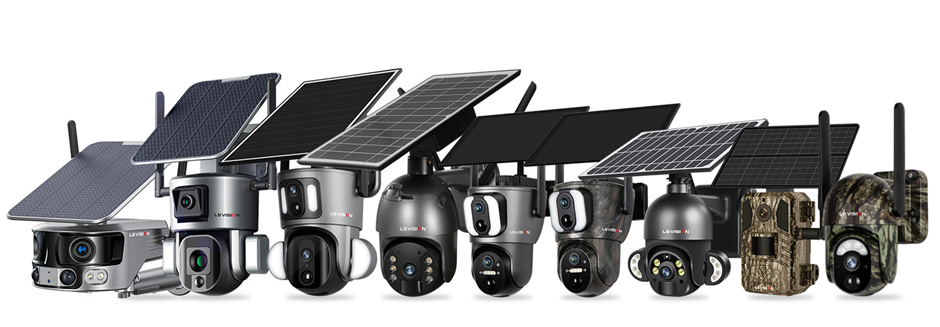Surveillance cameras have become indispensable tools in modern security systems, providing a watchful eye over various environments. One crucial aspect that defines their effectiveness is the range of vision they offer. In this detailed exploration, we delve into the capabilities and technologies that enable surveillance cameras to see over long distances, uncovering the factors that influence their reach and the advancements shaping their extended vision.

1. The Basics of Surveillance Camera Range:
The range of a surveillance camera refers to the maximum distance at which it can effectively capture and record details. This range is influenced by several factors, including the camera's resolution, lens type, and the environmental conditions in which it operates.
2. High-Resolution Cameras for Detailed Views:
One of the key determinants of a surveillance camera's long-range vision is its resolution. Higher resolution cameras can capture more details, allowing for clear identification of objects and individuals at greater distances. Advanced camera technologies, such as 4K and beyond, contribute to the enhancement of long-range surveillance capabilities.
3. The Role of Optical Zoom:
Optical zoom capability significantly impacts a surveillance camera's long-range vision. Cameras equipped with optical zoom lenses can magnify distant objects without sacrificing image quality. This feature is particularly crucial for applications where detailed observation over extended distances is imperative, such as in border security or large-scale outdoor areas.
4. Infrared Technology for Night Vision:
Nighttime surveillance often requires cameras with infrared (IR) capabilities. Infrared LEDs illuminate the scene with invisible light, allowing the camera to capture images in low-light or complete darkness. The integration of powerful infrared technology extends the surveillance camera's range into the night, providing continuous monitoring around the clock.
5. Thermal Imaging for Unmatched Detection:
For surveillance applications that demand detection over vast distances, thermal imaging technology comes into play. Thermal cameras can detect heat signatures, making them highly effective in scenarios where traditional cameras may struggle. These cameras excel in long-range detection, making them ideal for applications like perimeter security and monitoring expansive outdoor areas.
6. Environmental Factors and Atmospheric Conditions:
The effectiveness of long-range surveillance is also influenced by environmental factors and atmospheric conditions. Variables such as fog, rain, or pollution can impact visibility. Advanced cameras equipped with features like defogging and image enhancement algorithms help mitigate the effects of adverse weather conditions, ensuring clearer vision over extended distances.
7. Advanced Analytics and AI Algorithms:
The integration of advanced analytics and Artificial Intelligence (AI) algorithms contributes to the extended vision of surveillance cameras. Smart features such as object recognition, behavioral analysis, and anomaly detection enhance the camera's ability to discern relevant details amidst complex scenes, enabling effective surveillance over large areas.
8. Long-Range Surveillance Applications:
The exploration of long-range vision in surveillance cameras finds application in various sectors. From critical infrastructure protection to border surveillance, these cameras play a pivotal role in safeguarding expansive areas. Additionally, their deployment in industrial settings, wildlife monitoring, and large-scale event security highlights the versatility of long-range surveillance solutions.
9. Challenges and Future Developments:
Despite significant advancements, challenges remain in achieving optimal long-range surveillance. Factors like image degradation over distance and the need for precise calibration present ongoing areas for improvement. Future developments may see the integration of even more sophisticated technologies, such as machine learning for real-time scene analysis and adaptive optics for enhanced image clarity.
Conclusion:
In the realm of surveillance, the exploration of "Eyes in the Distance: Exploring the Long-Range Vision of Surveillance Cameras" unveils the intricate technologies and considerations that empower these essential tools to monitor vast areas effectively. From high-resolution imaging and optical zoom to infrared and thermal capabilities, the amalgamation of these features collectively contributes to the extended vision of modern surveillance systems. As technology continues to advance, pushing the boundaries of long-range surveillance, these developments have broader implications for diverse applications, including the ever-evolving landscape of solar CCTV solutions. The horizon of surveillance is expanding, promising even greater efficiency and effectiveness in safeguarding spaces, with a special nod to the sustainable capabilities of solar-powered CCTV systems.


